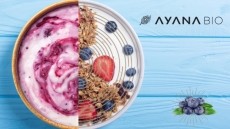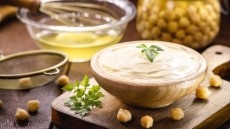ARS develops peas that claim better color, texture
texture and flavor, reported US Department of Agriculture (USDA)
scientists yesterday.
The GreenPack-DG and WhipperSnapper varieties were first offered to seed producers last year, after years of tests by researchers at the USDA's Agricultural Research Service (ARS).
According to research leader Richard Fery, who developed the varieties with colleagues from Louisiana State University and Lincoln University, one of the advantages of the new peas is that they could solve the problem of color fading faced by frozen food processors, allowing them to sell a better looking product.
Southernpeas technically are beans, not peas.
They are sometimes called cowpeas, black-eyed peas, field peas or crowders.
They are used in traditional southern cuisine in soups, salads, casseroles and fritters, a fried quick-bread.
An earlier variety developed by ARS, Chaleston Greenpack, currently claims to be the leading black-eyed pea cultivar being packed by frozen food producers.
According to the scientists, the Greenpack DG 'double-green' pea is an improvement on this variety, and is designed to maintain a "perfect shade of green" , even when dry.
The reason for this is that it combines two unrelated genes that both allow the pea's green color to persist after the bean is dried.
Fery said he expects GreenPack-DG to replace the earlier southernpea as a favorite for processing into frozen pea products.
The black-eyed pea was traditionally harvested by hand when it was fresh, at which stage it was still green.
However, today, the peas are harvested using grain combines, and as it remains very expensive to mechanically harvest fresh peas, they are now left on the plant to dry out.
But because the pea plant must be very dry in order for the grain combine to properly harvest the crop, growers apply a special chemical to the plant in order to dry it out, explained Fery.
"Once the chemical is applied, the pea cannot be harvested for seven days.
This waiting period can cause some color loss or fading, which is a production problem that has been encountered with Charleston Greenpack," he told FoodNavigator-USA.com last year.
But Greenpack DG now claims to have a more persistent color, as it combines the 'green cotyledon' (gc) gene used in Charleston Greenpack together with a 'green testa' (gt) gene, which imparts a green seed-coat color that persists in the dry seed.
The agency's WhipperSnapper variety yields pods with 14 creamy-white, kidney-shaped peas.
ARS said it can be picked when the pods are still immature, tender and edible, then sold as fresh snaps.
The pods also can be left on the vine until ready to sell with full-sized peas either within the pods, or shelled.
According to the agency, some advantages are that this southernpea flourishes in weather that is too hot for some other beans.
Also, it claims to be "extremely easy" to shell.















